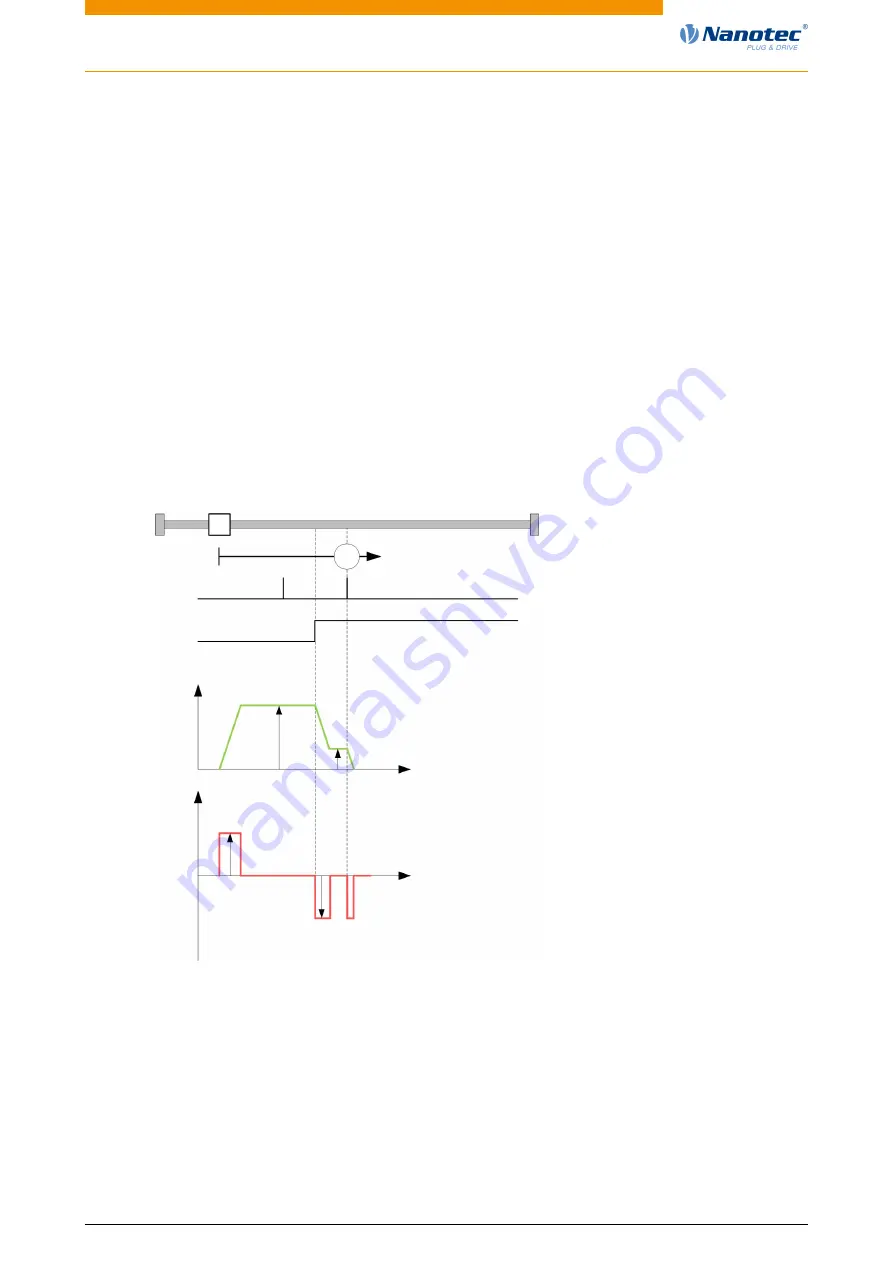
Technical Manual PD4-E-M (EtherCAT)
6 Operating modes
•
h
:01
h
(Speed During Search For Switch):
Speed for the search of the switch
•
h
:02
h
(Speed During Search For Zero):
Speed for the search of the index
•
h
(Max Motor Speed): Maximum speed
•
(Homing Acceleration):
Starting acceleration and braking deceleration for homing
•
h
(Limit Switch Tolerance Band):
After reaching the positive or negative limit switch, the controller permits a tolerance range in which
the motor can continue to run. If this tolerance range is exceeded, the motor stops and the controller
switches to the "Fault" state. If limit switches can be actuated during homing, the tolerance range
should be selected such that the motor does not exit the tolerance range during braking. Homing
cannot otherwise be successfully performed. After homing is completed, the tolerance range can be
reset to "0" if this is required by the application.
•
:01
h
(Minimum Current For Block Detection):
Minimum current threshold which, if exceeded, is to detect the blocking of the motor at a block.
•
:02
h
(Period Of Blocking):
Specifies the time in ms that the motor is to continue to run against the block after block detection.
Homing speeds
The figure shows the homing speeds using method 4 as an example:
Sp
ee
d
Acce
le
ra
tio
n
6099
h
:1
4
609A
h
609A
h
6099
h
:2
Index pulse
Reference
switch
6.5.2 Homing method
Description
The homing method is written as a number in object 6098
h
and decides whether, on a switch edge
(rising/falling), a current threshold for block detection or an index pulse is referenced or in which
direction homing starts. Methods that use the index pulse of the encoder lie in the number range 1 to
14, 33 and 34. Methods that do not use the index pulse of the encoder lie between 17 and 30, but are
identical to methods 1 to 14 with respect to the travel profiles. These number are shown in circles in the
Version: 1.0.1 / FIR-v1748
63
















































